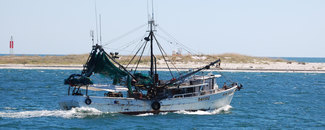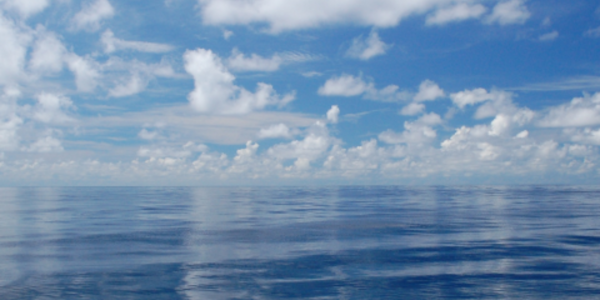NCEI Updates a Critical Regional Climatology

The Gulf of Mexico is the world’s largest Gulf, covering an area of approximately 600,000 square miles (1,550,000 square km). Due to its large size and the complex current system, the Gulf of Mexico has a diverse ecology, ranging from the coastal zone, which serves as a nursery for all types of marine life, to the deep waters of the abyssal plain where colonies of deep-sea coral grow on the seafloor. The Gulf also provides important economic benefits to the countries that border it—the United States, Mexico, and Cuba—including shipping, oil and gas, and fisheries. It is also a globally important body of water that connects to the Gulf Stream in the Atlantic Ocean.
Researchers have collected valuable data about the Gulf of Mexico over many years, and the NOAA National Centers for Environmental Information (NCEI) not only preserves this data for future generations but uses the data to make useful products like the newly updated Gulf of Mexico Regional Climatology.
What is a Climatology?
According to the World Meteorological Organization, the term “climatology” defines long-term averages of a given variable, like sea surface temperature, over various time periods, usually 30 years. In oceanography, the term “ocean climate” is used to define ocean parameters averaged over a decade or longer. Ocean climatologies, global or regional, relate specifically to long-term averaged oceanic parameters—temperature or salinity, for example—in the entire world ocean or in selected ocean regions.
NCEI develops ocean climatologies for annual, seasonal, and monthly periods to perform scientific analyses while investigating interannual-to-decadal ocean climate variability using historical oceanographic data. Using data in NCEI’s World Ocean Database 2018, the NCEI Regional Climatology Team compiled the Gulf of Mexico (GOM) Regional Climatology (RC) version 2.0 providing objectively analyzed annual, seasonal, and monthly temperature, salinity, dissolved oxygen, percent oxygen saturation, apparent oxygen utilization, silicate, phosphate, and nitrate for each decade starting in 1955. It also includes an averaged climatology for 1955-2017.
The temperature and salinity in the GOM RC version 2 are provided with three spatial resolutions—1°x1°, 0.25°x0.25°, and 0.1°x0.1° respectively. All other parameters— including oxygen and nutrients—were extracted from the World Ocean Atlas 2018 on a 1°x1° grid. All parameters are available on 102 standard levels from the surface to 5500 meters for annual and seasonal time periods, and from the surface to 1500 meters (57 standard levels) for the monthly time period.
What’s New in Version 2?
GOM RC Version 2.0 was computed using all the available data from 1955-2017 in the World Ocean Database. The update substantially revises and extends the original climatology, which was released in 2010 in the wake of the Deepwater Horizon oil spill and updated in 2011. Data are available in Comma Separated Values (CSV), ArcMap shape-file, and NetCDF.
The new high-resolution temperature and salinity decadal climatologies allow researchers to more precisely assess decadal climate change in the Gulf, substantially increasing this climatology’s value for ocean climate studies and other applications.




